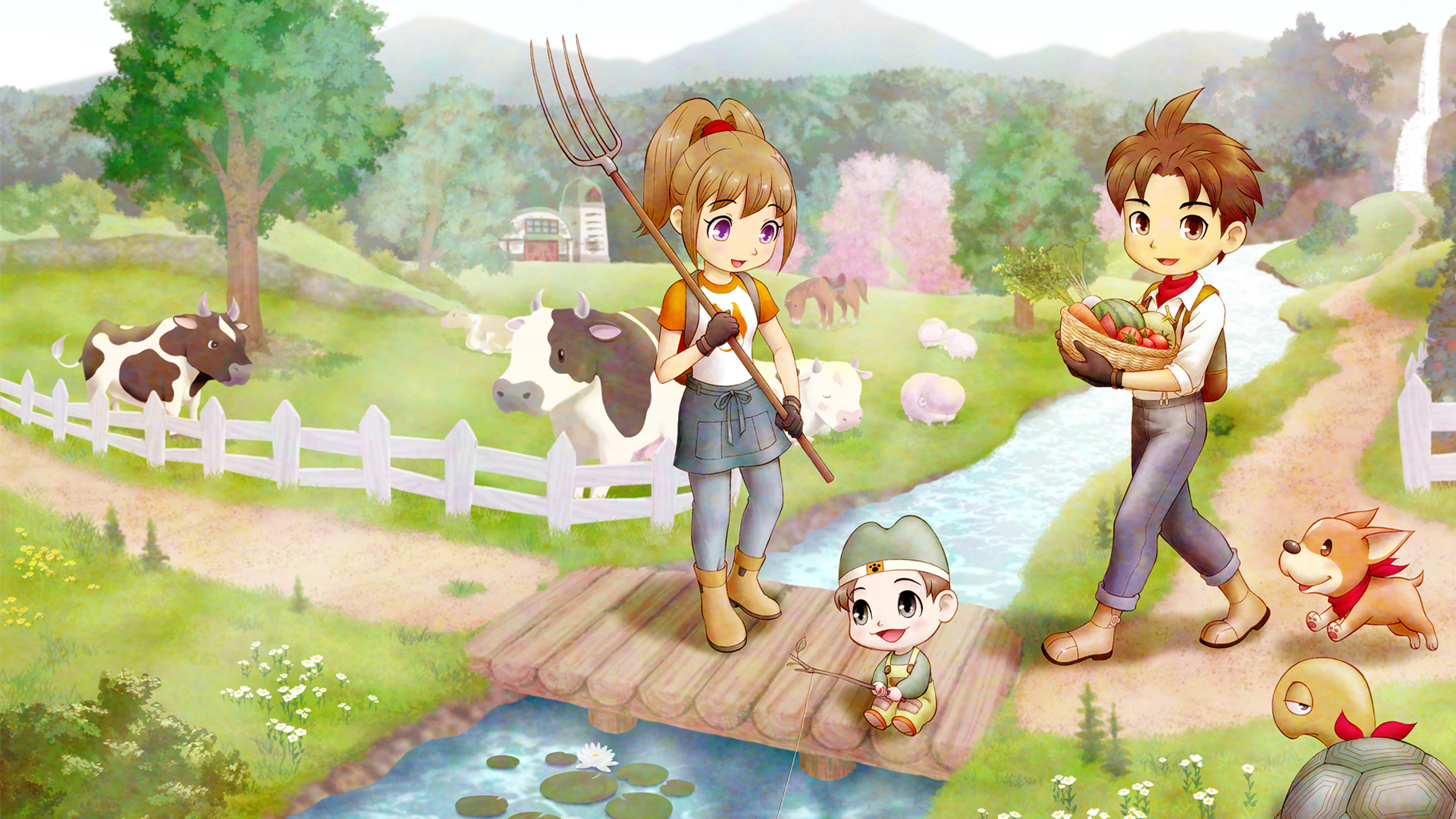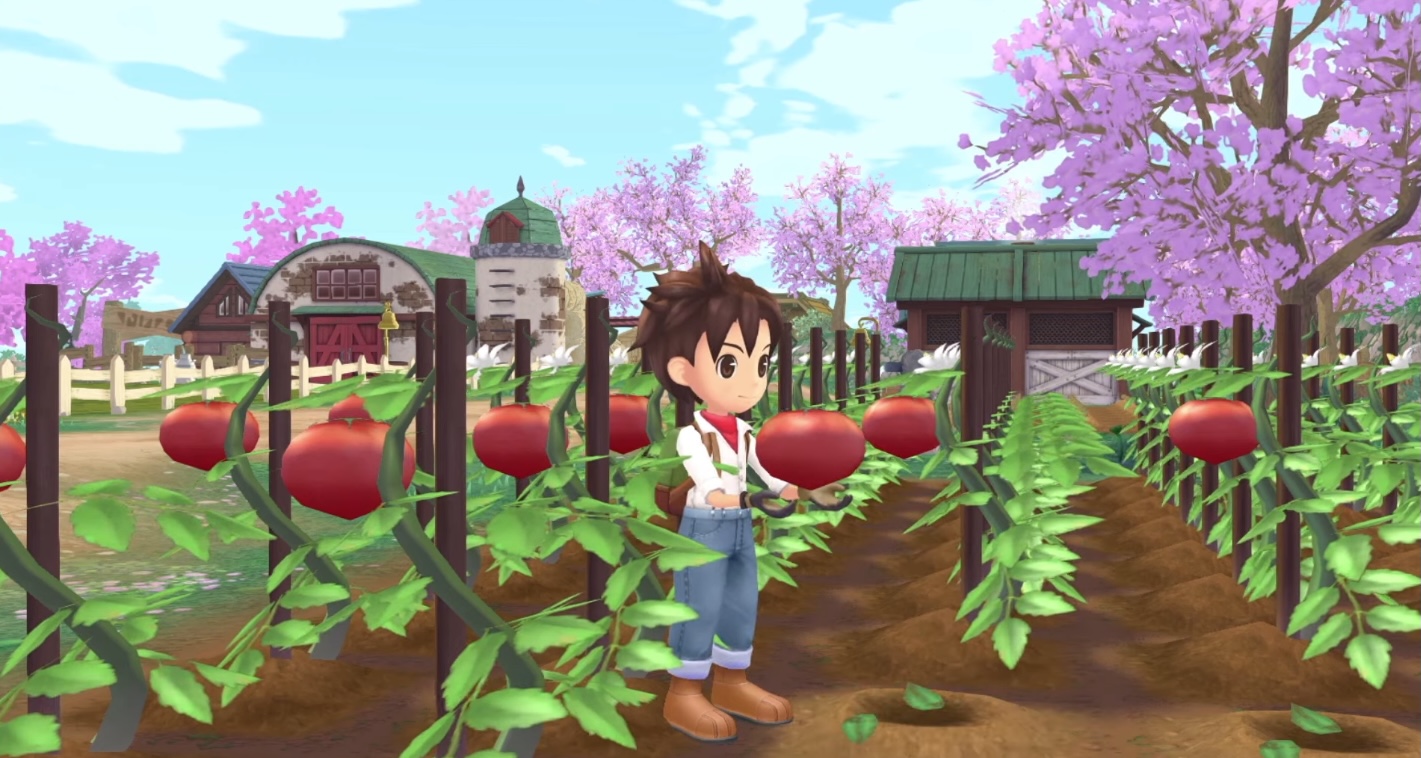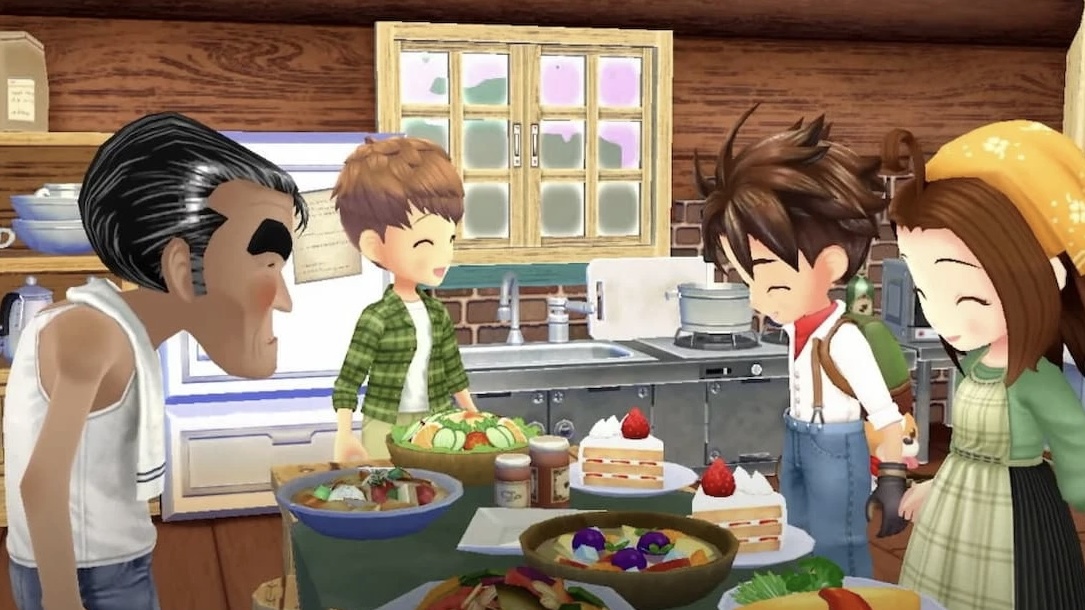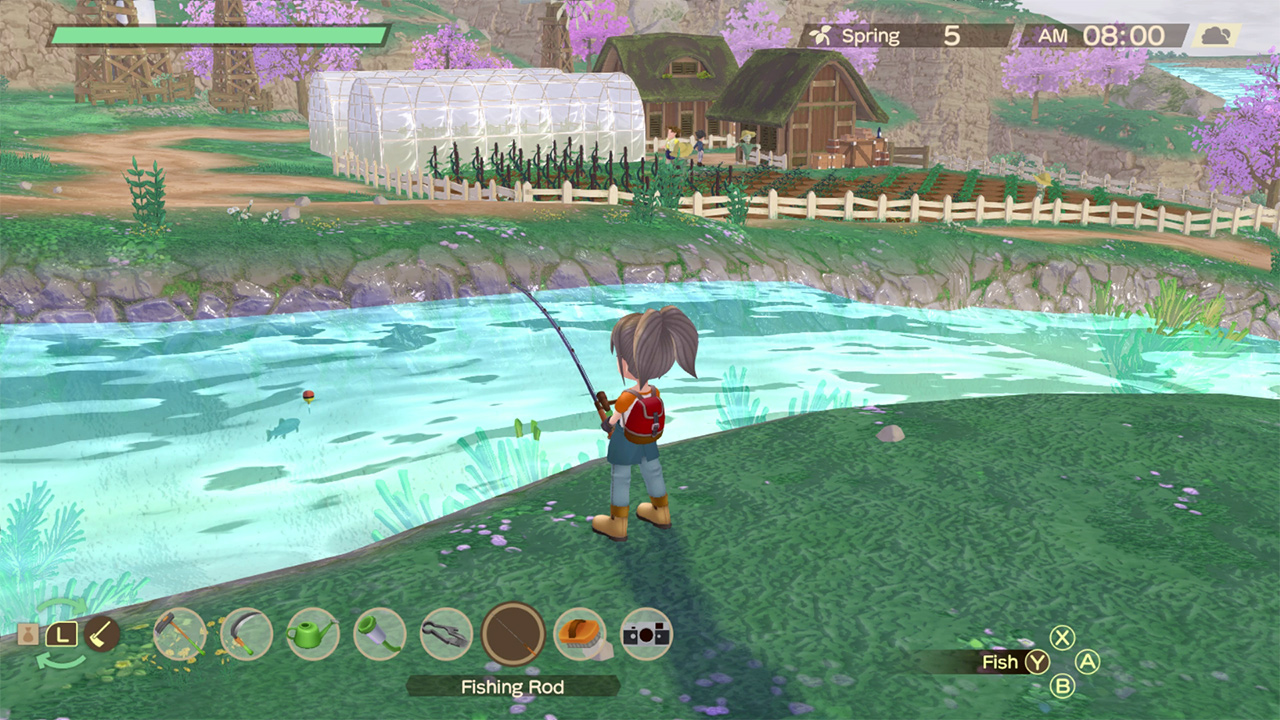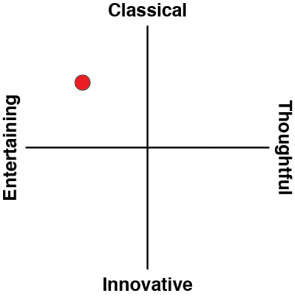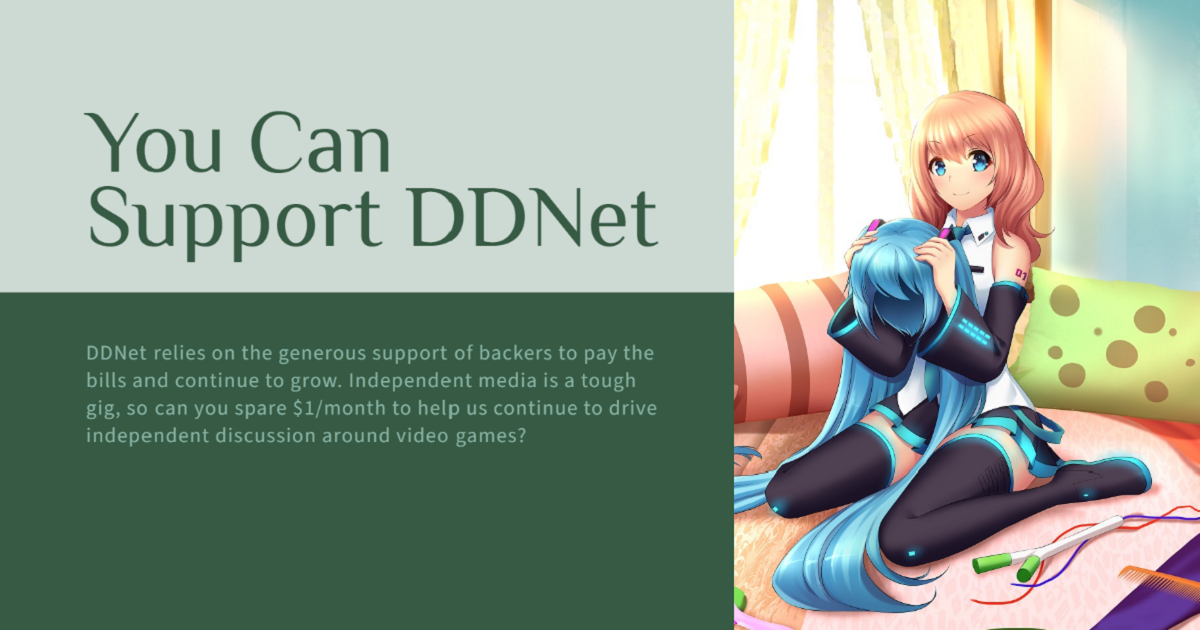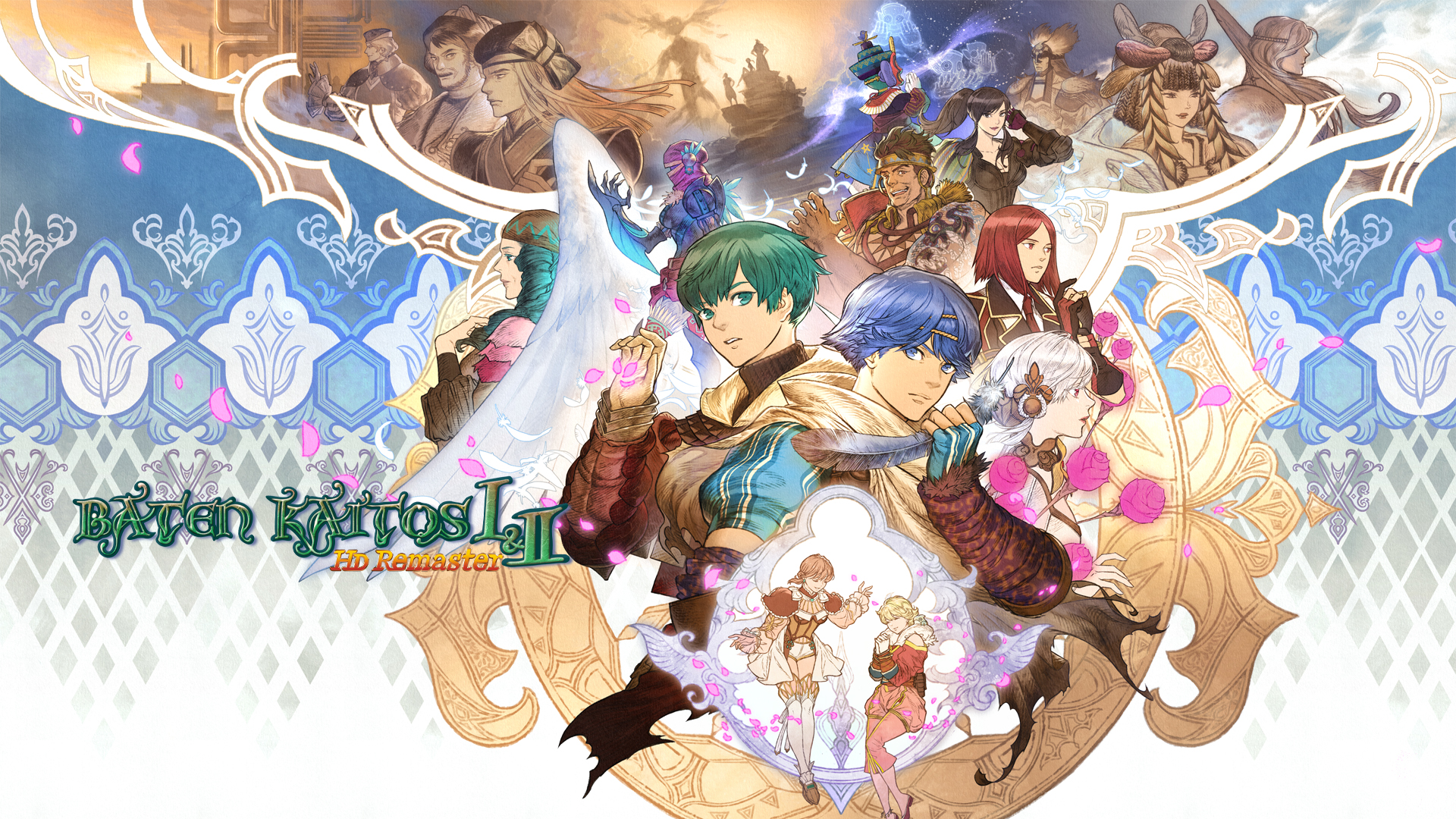Once, many years ago, I read an argument that the enduring popularity of Harvest Moon/Story of Seasons in its homeland in Japan has to do with a very real desire for a “sea change” or “tree change” among Japanese urban populations. If this is true (and I believe there is something real to it), then Story of Seasons: A Wonderful Life is arguably the strongest execution of the idea. This remake has done that masterpiece fine justice.
Tokyo, Osaka, and to a lesser extent the next tier of cities – Nagoya, Sapporo, Kobe, and Kyoto – are more than just massive concrete jungles of bustling energy. It can feel like it’s hard to get back to nature from those centres, but the desire to get out goes beyond just that. Every major city in the world has that. Japanese culture meanwhile is immensely high-intensity, high-pressure and performance-based beyond what those in most other places in the world field, and so for a sizable number of people, there’s a moment where they “snap” and realise that they just need to get out and break as far from mainstream society as possible. These people are then romanticised to a significant extent by that same Japanese mainstream society, with variety shows and documentaries constantly profiling those people that escape the city to find some beaten-up old house in some dying town to restore. It is this romanticisation that forms the core of where Story of Seasons (and Harvest Moon) come from.
A Wonderful Life leans heavily into this even by the series standards. Taking place over just shy of a dozen “chapters” in a person’s life, it starts when they themselves make the big move to escape the city. Then it tracks key moments in their life afterwards, from getting married and having a child, to watching that child grow and struggle with their place in the world, and finally the twilight and end of life. Over those chapters, you’re bombarded with a near-constant stream of little anecdotes about both your life and the lives of those in the quaint little village around you, and the game quickly leaves the impression that what you’re experiencing is, in fact, a metaphoric representation of the memories of someone in the last moments of their life, reminiscing through everything that their memories had decided was important.
This quality means that A Wonderful Life handles the core thematic criticism that can be levelled at the series quite well. Here’s the thing: actual farming is not an easy or pleasant existence. It’s physically arduous work, and an economic nightmare to manage. Most farmers do not own private yachts for a good reason. That the Harvest Moon and Story of Seasons properties constantly frame farming as a utopic existence seems naïve to the point of insincerity (as wonderful as these games always are!), but it’s entirely plausible that a person reminiscing back on their lives would structure the memories to focus on the positive. Meanwhile, that same “rose-tinted” approach to a grass change makes sense in A Wonderful Life as we tend to more heavily weigh positive memories over the hard times, and therefore one of the reasons it is one of the more compelling titles in the series is that it has that authenticity and thematic cohesiveness to it that some of the others lack.
Time moves fairly quickly in A Wonderful Life, with “seasons” being condensed to just a few days, and there being substantial jumps between those chapters in your protagonist’s life. In the condensed time that you are given, there is a lot you can do and see. This includes raising many different kinds of animals and growing produce, creating hybrid crops and, of course, spending (wasting?) too much time hanging out with the family or giving yourself some “you time” to catch every fish in every body of water you can find. Where most Harvest Moon/Story of Seasons titles make repetition of daily life a key feature, here you’re subtly encouraged to adopt the YOLO approach and try and get out there and do everything you can with the time you’ve got. You’re helped to an extent in that there isn’t really any way for you to waste your time – there aren’t even that many festivals or day-killing events that other titles have – and you’ll never feel truly stressed to accomplish X amount done before nightfall and bedtime. You’re simply encouraged not to get into a rut where you grow the same crops and maintain the same animals day-in, day-out, year after year.
The long and short of all the above is that A Wonderful Life is an incredibly warming and good-natured experience, even by the standards of an almost sickeningly wholesome series. The community you’ll interact with is closer to your farm’s doorstep than any other Harvest Moon/Story of Seasons, and you’ll find yourself in love with the eccentric but good-natured little village’s worth of people immediately. It’ll feel homey, in other words, and you’ll quickly join the protagonist in never wanting to exit the world to return to the grim reality of concrete and commutes.
The updates from the original GameCube release are generally mild. There’s a new visual engine, which gives you a modern, behind-the-back view of the world. Story of Seasons/Rune Factory and the ilk have never been particularly renowned for their technical engines, and it’s no different here. It’s critical to understand that the art direction of A Wonderful Life is gorgeous, with the art team demonstrating a spectacular understanding of colour palettes and homey aesthetics. It’s just that the technical execution only just breaks par. There is frequently noticeable pop-in despite the world being small, simple textures, and basic character models. It’s frustrating, because, with the right engine, these games could absolutely blow people’s minds with their vivid artistry. Instead, now that there are many, many “farming life” games out there, the developers might want to rethink their hubris regarding the technical side of things in the future.
On a more positive and progressive note, the remake does embrace greater diversity, and does allow you to play both as a female and non-binary if you wish, pronouns and all. Whatever you choose, you are not limited to eligible opposite-sex marriage candidates but can form a same-sex union if you so wish. It goes without saying that these are all good forward steps and it’s encouraging to see the developers continue to push for equality, even within the context of an otherwise fairly faithful remake.
One final extra that I remember over my GameCube play many eons ago is that you can also now breed and raise goats and sheep as livestock. A Wonderful Life already had one of the most expansive ranges of livestock animals in the series. Most importantly to me, it allowed me to breed ducks as was the first title in the series to give us those. More variety in animals further builds the YOLO quality that pervades the experience, and the way it encourages you to keep finding new things to do.
There are some nice little bonus features too. You can whip out a camera to take photos whenever you like (and while I’d have preferred SOME kind of feature set to allow me to take more artsy photos, this is a nice way of preserving memories during your play through). There are also plenty of outfits to play dress-up in. Given how attached you’ll get to your family and life in the world, these simple features, minor as they are, end up being very welcome.
A Wonderful Life on the GameCube was perhaps the most perfect execution of the Harvest Moon (now Story of Seasons) ethos out of all in the long-running series. As such, it’s the one that also generates the strongest pathos. Heart-meltingly warm good-naturedness, mixed with a perfectly adequate remake make this wholesome masterpiece relevant all over again. With the state of the world being this lousy, these little escapes are more valuable than ever.
